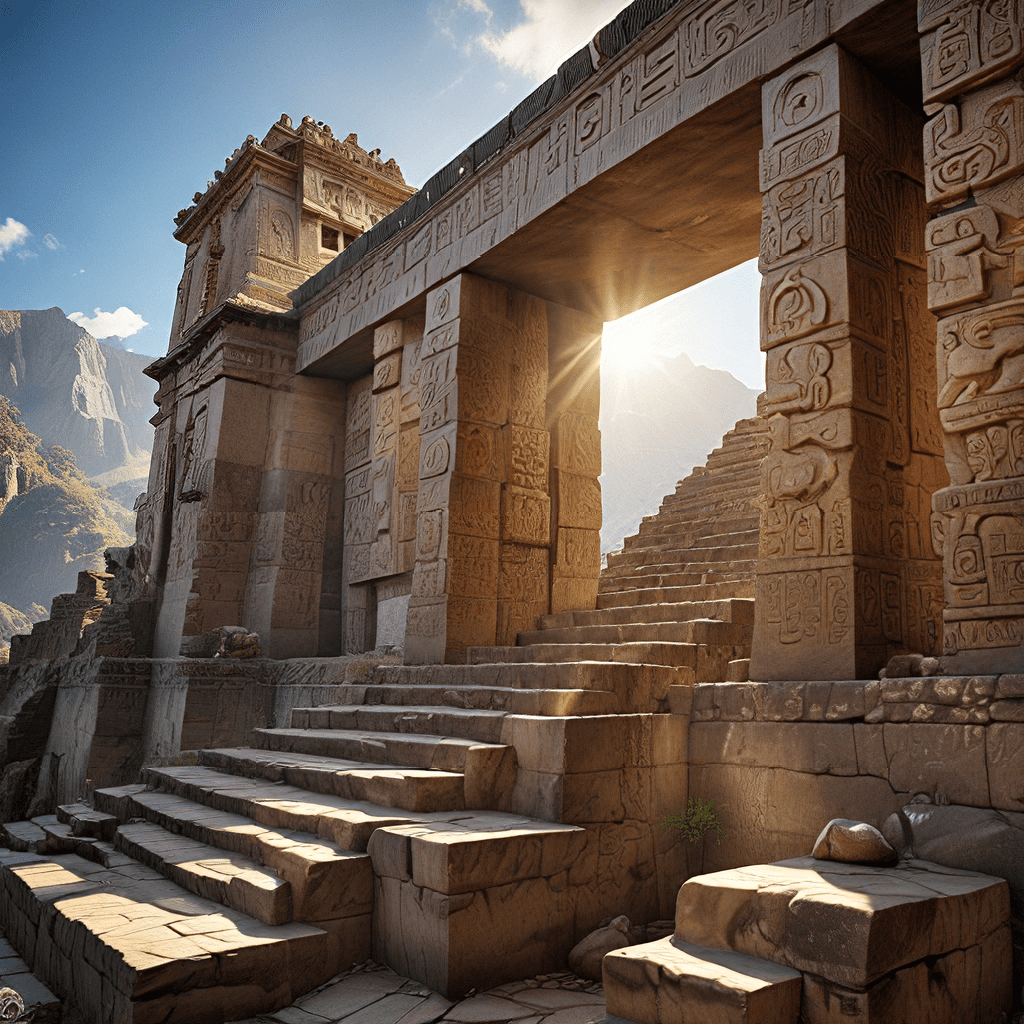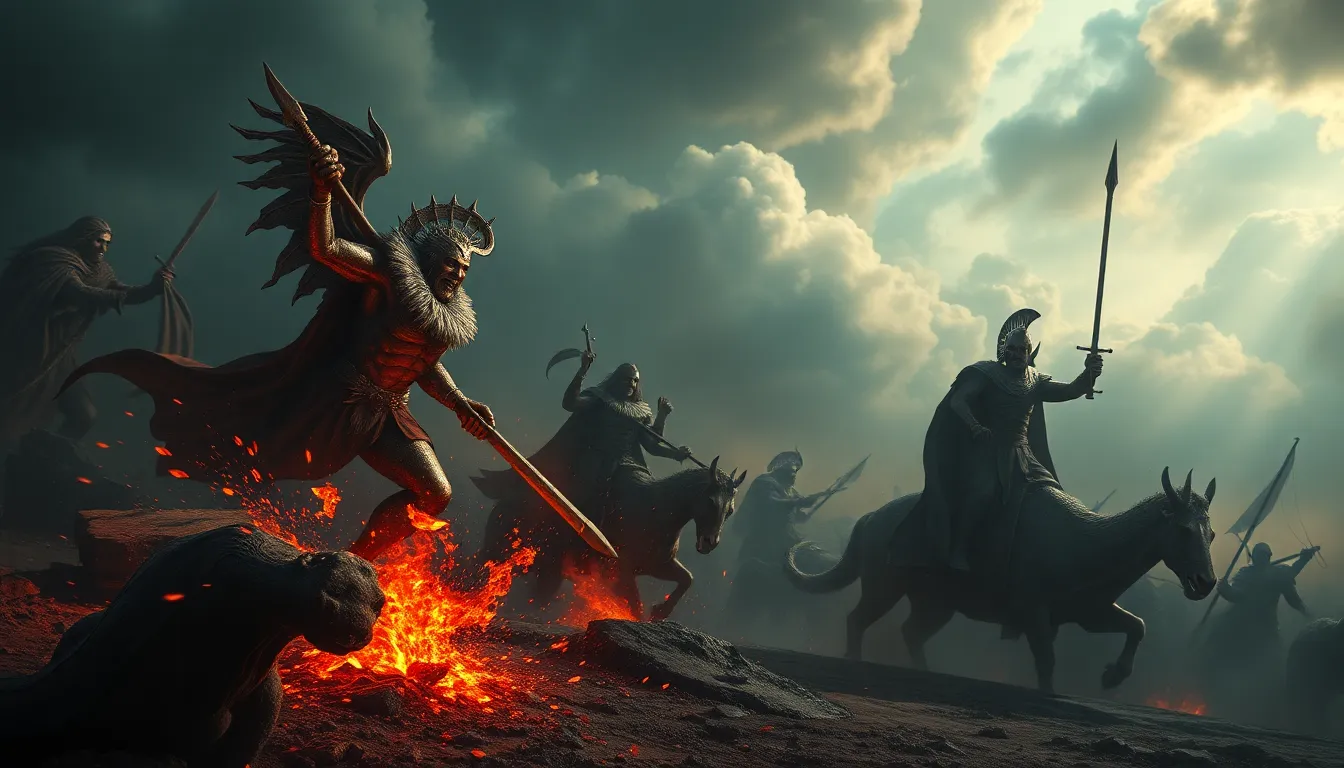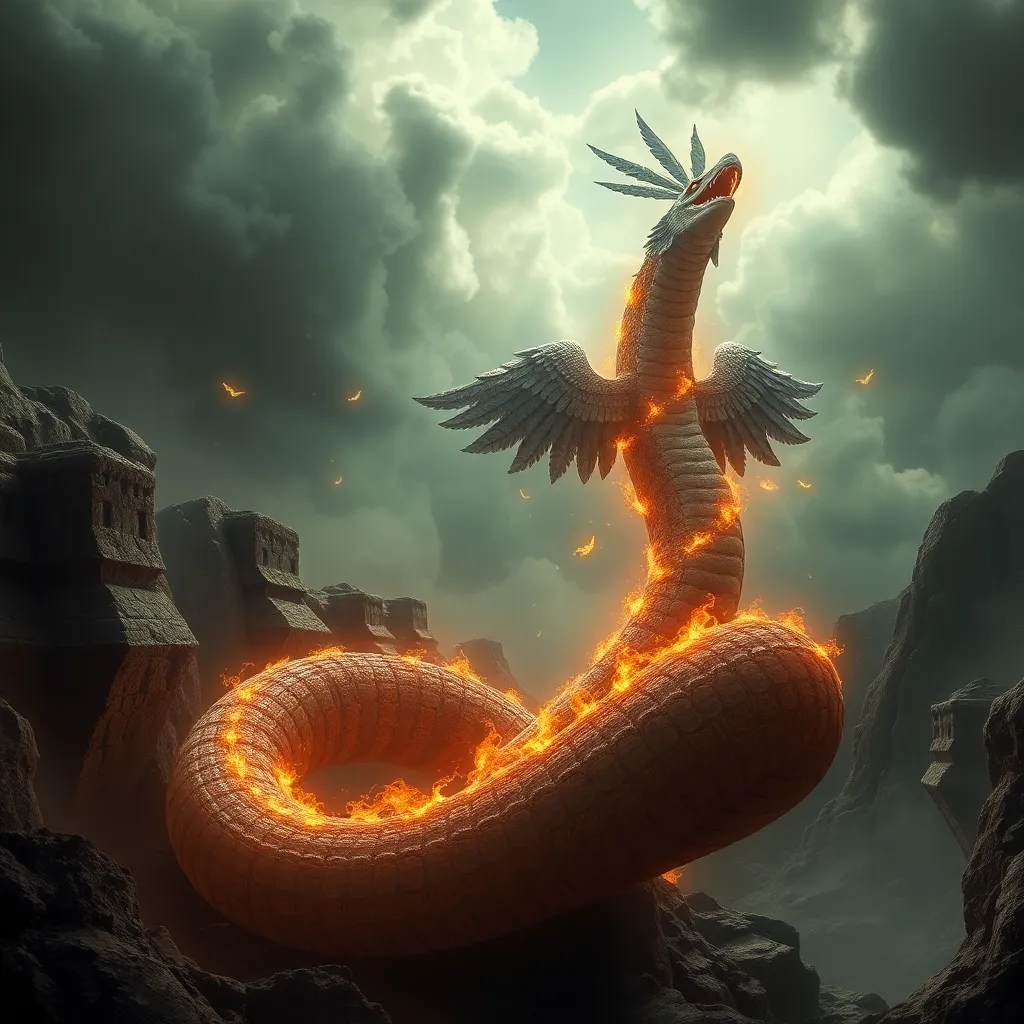Incan Mythical Architecture: Structures of Sacred Geometry
The Cosmic Order: Inca Beliefs and the Sacred
The Incan civilization, renowned for its sophisticated engineering and intricate architectural marvels, possessed a deep reverence for the cosmos and its intricate order. Their belief system, rooted in a profound understanding of the natural world, saw the universe as a living, breathing entity governed by divine forces. This worldview, permeated by a sense of awe and wonder for the celestial bodies, profoundly shaped their art, culture, and, most notably, their architecture.
At the heart of their beliefs lay the divine trinity of Pachamama, the Earth Mother, Inti, the Sun God, and the celestial bodies, which the Inca revered as powerful intermediaries between the earthly and divine realms. They saw the cosmos as a tapestry woven from a network of interconnected forces, with each element playing a crucial role in maintaining the delicate balance of the universe. This concept, known as "kay pacha," emphasized the harmonious relationship between humanity and nature and heavily influenced the construction of Inca cities and temples.
The Architect of the Cosmos: Viracocha and the Origins of the World
Viracocha, the supreme creator god, held a central place in Incan mythology, shaping the land, creating human beings, and establishing the cosmic order. According to their creation myth, Viracocha, a powerful being who emerged from Lake Titicaca, sculpted the landscape, carved valleys and mountains, and breathed life into the world. He bestowed upon humans the knowledge of agriculture, language, and the arts, guiding them towards a life of harmony and respect for the natural world.
The Incan creation myth directly connects to their sacred architecture, as they viewed their structures as tangible embodiments of the divine order established by Viracocha. The concept of "huaca," which refers to sacred places imbued with spiritual power, played a significant role in their architectural practices. These places, often marked by ancient ruins, natural formations, or specific locations, were believed to be gateways to the spiritual realm and held immense significance for the Inca.
The Language of Stones: Geometry as a Sacred Code
Incan architecture, renowned for its intricate designs and meticulous construction, transcended mere functionality. It served as a powerful language of symbols and geometric patterns, reflecting their profound reverence for the cosmos and its intricate order. The Inca believed that geometric forms, particularly the "cross" and the "spiral," held deep significance, representing the interconnectedness of the universe and its cycles.
The "cross," often integrated into their structures, represented the four cardinal directions and the four elements of the earth. It symbolized the unifying force that connected heaven and earth, embodying the balance and harmony that governed the natural world. The "spiral," appearing in various forms throughout their architecture, represented the celestial cycles of the sun and moon, symbolizing the continuous flow of time and the cyclical nature of life. The Inca’s understanding of geometry wasn't just aesthetic, but a way to codify sacred knowledge, linking the earthly realm to the celestial realm.
The Temple of the Sun: Coricancha and its Celestial Alignment
Coricancha, the Temple of the Sun, stood as the pinnacle of Incan architectural prowess, a testament to their mastery of engineering, astronomy, and spiritual beliefs. Located in the heart of Cusco, the ancient Incan capital, this temple served as a grand sanctuary dedicated to Inti, the Sun God. Built entirely from finely cut and polished stone, Coricancha was adorned with intricate gold plates, reflecting the sun's brilliance and symbolizing its divine power.
The temple's orientation was meticulously aligned with the solstice and equinox, showcasing the Inca’s profound understanding of celestial cycles and their ability to embed astronomical knowledge within their architecture. This alignment ensured that the temple received the maximum amount of sunlight during specific celestial events, reaffirming their reverence for the sun and its role in regulating life on Earth.
The Sacred City of Machu Picchu: A Cosmic Mirror
Machu Picchu, perched high in the Andes Mountains, stands as a majestic testament to the Inca’s architectural brilliance and their deep connection to the sacred. Its strategic location, nestled between towering peaks and overlooking the Urubamba River, reflected their belief in the interconnectedness of nature and the divine. The city's layout, with its intricate network of terraces, plazas, and temples, mirrored the cosmic order, aligning with the celestial bodies and symbolizing the harmony between the earthly and heavenly realms.
The city served as a sacred sanctuary, a place for spiritual retreat and ceremonial gatherings. Its layout, incorporating astronomical alignments and geometric patterns, reflected a deep reverence for the cosmos and its influence on human affairs. The hidden symbolism and meanings embedded within the city's design continue to captivate researchers and historians, revealing a profound understanding of astronomy, mathematics, and the power of the natural world.
The Mystery of the Intihuatana: A Stone of the Sun
The Intihuatana, a mysterious stone structure found at Machu Picchu and other Inca sites, has captivated the imagination of researchers for centuries. Its purpose and symbolism remain shrouded in mystery, but its unique design and celestial alignment suggest a profound connection to the cosmos.
The name "Intihuatana" translates to "Hitching Post of the Sun," hinting at its potential function as a solar observatory. The stone’s carefully carved grooves and angles, meticulously oriented towards the sun, suggest that it served as a device for tracking the sun's movement throughout the year. The Intihuatana’s prominent placement within Machu Picchu, overlooking the sacred plaza, further reinforces its significance as a focal point for astronomical observation.
Some believe the Intihuatana was a calendar stone, used by the Inca to track the changing seasons and agricultural cycles. Its precise alignment with the solstices and equinoxes suggests a sophisticated understanding of astronomy, allowing the Inca to predict the arrival of key agricultural periods.
However, despite the compelling evidence, the true purpose and symbolism of the Intihuatana remain elusive. Some researchers speculate that it may have played a role in ritualistic practices, serving as a focal point for ceremonies dedicated to Inti, the Sun God. Others propose that it held a deeper symbolic meaning, representing the Inca’s belief in the interconnectedness of the cosmos and their place within the grand order of the universe.
Theories of Sacred Geometry in Incan Architecture
The precise knowledge and intricate techniques used to construct Incan sites have sparked much debate and speculation about the origins of their architectural mastery. Several theories attempt to explain the presence of sacred geometry and astronomical alignments in their work.
One theory suggests the influence of the "School of the Andes," a hypothetical institution believed to have passed down knowledge of astronomy, mathematics, and architecture through generations of Inca priests. This school, according to the theory, served as a repository of ancient wisdom, preserving and transmitting the understanding of the cosmos and its relationship to human affairs.
Another theory proposes a connection between the Inca’s advanced astronomical observations and their architectural designs. The Inca, renowned for their precise knowledge of celestial cycles, may have incorporated their astronomical knowledge into their architectural plans, aligning structures with specific celestial events. This would have allowed them to create temples and cities that reflected the cosmic order and celebrated the power of the celestial bodies.
A more speculative theory suggests the possibility of extraterrestrial influence on Incan designs. This theory posits that the Inca may have received knowledge or technology from advanced extraterrestrial civilizations, explaining the complexity and precision of their architecture. While this theory lacks concrete evidence, it adds to the enduring mystery surrounding the Inca's architectural achievements.
The Legacy
The Incan legacy, woven from a tapestry of intricate architecture, profound beliefs, and sophisticated knowledge of the cosmos, continues to inspire and perplex researchers today. Their structures stand as testaments to their mastery of engineering, their reverence for the natural world, and their deep connection to the celestial realm. Their reverence for sacred geometry and astronomical alignments reveals a people who saw the universe as a living, breathing entity, intricately connected to human life and destiny.
The enduring mystery surrounding their architectural achievements serves as a reminder of the vast wealth of knowledge and wisdom that may have been lost to time. The study of Incan architecture offers a profound glimpse into a world where humans sought to harmonize with the natural world and understand the intricate workings of the cosmos.
FAQ
What is the connection between the Incan belief system and their architecture?
The Incan belief system, deeply rooted in reverence for the natural world and the cosmos, heavily influenced their architecture. They viewed the universe as a living, breathing entity governed by divine forces, with each element playing a vital role in maintaining the balance of the universe. This belief system led them to construct temples and cities that reflected the cosmic order, incorporating sacred geometry, astronomical alignments, and symbolic patterns that signified their deep understanding and respect for the cosmos.
What is the significance of sacred geometry in Incan architecture?
Incan architecture employed a language of geometric patterns and symbols that reflected their belief in the interconnectedness of the universe. The use of the "cross" and the "spiral" are examples of geometric forms that held profound meaning for the Inca, representing the four cardinal directions, the elements of the earth, and the celestial cycles of the sun and the moon. These forms served as a tangible embodiment of their understanding of the cosmic order and their reverence for the divine forces that governed the natural world.
What are the theories about the purpose of the Intihuatana?
The Intihuatana, a mysterious stone structure found at Machu Picchu and other Inca sites, has sparked much debate and speculation about its purpose and symbolism. Some believe it was a solar observatory used to track the sun's movement throughout the year. Others suggest it was a calendar stone used by the Inca to track agricultural cycles. Another theory proposes that it played a role in ritualistic practices, serving as a focal point for ceremonies dedicated to Inti, the Sun God.
What is the significance of the city of Machu Picchu?
Machu Picchu, strategically located within the Andes Mountains and meticulously aligned with the celestial bodies, stands as a testament to the Inca’s architectural brilliance and their reverence for the cosmos. The city served as a sacred sanctuary, a place for spiritual retreat and ceremonial gatherings. The intricate network of terraces, plazas, and temples within the city reflected the cosmic order, symbolizing the harmony between the earthly and heavenly realms.
What are the possible origins of the Incan's architectural knowledge?
Several theories attempt to explain the origins of the Incan’s architectural mastery. Some suggest the influence of the "School of the Andes," a hypothetical institution that passed down knowledge of astronomy, mathematics, and architecture through generations of Inca priests. Other theories propose a connection to advanced astronomical observations or even the possibility of extraterrestrial influence on Incan designs. The precise origins of their knowledge remain a mystery, but the intricate design and celestial alignments of their structures stand as a testament to their profound understanding of the universe.



